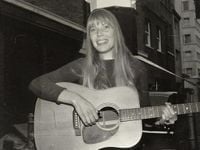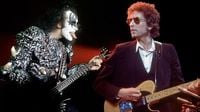Bob Dylan’s name has reverberated through American music for more than six decades, but in 2025, his influence and artistry seem as vital as ever. On September 20, Dylan joined the all-star lineup for Farm Aid 40 at Huntington Bank Stadium in Minneapolis, sharing the stage with an impressive roster including Willie Nelson, John Mellencamp, Neil Young, Dave Matthews, and Margo Price. The festival, a staple of advocacy for America’s independent family farmers, marked its fortieth anniversary with a show that was as much about history as it was about hope for the future.
According to Billboard, Dylan’s presence at Farm Aid 40 was particularly poignant. His connection to the event runs deep—he was one of the original performers at the inaugural Farm Aid concert in 1985. That first show, organized by Willie Nelson just six weeks after Dylan’s spontaneous plea at the Live Aid benefit, set the stage for a movement. On July 13, 1985, Dylan famously mused, “I hope that some of the money that's raised for the people in Africa, maybe they can just take a little bit of it—maybe one or two million, maybe—and use it, say, to pay the mortgages on some of the farms that the farmers here owe to the banks?” Nelson later recalled that Dylan’s words “hit me like a ton of bricks.” The result was a gathering of musical legends in Champaign, Illinois, including Johnny Cash, John Fogerty, Don Henley, Billy Joel, Loretta Lynn, Roy Orbison, Bonnie Raitt, Tom Petty, and the Heartbreakers—and, of course, Dylan himself.
This year’s Farm Aid lineup reflected both tradition and evolution. Alongside the board members, audiences saw performances from Kenny Chesney, Billy Strings, Nathaniel Rateliff & the Night Sweats, Lukas Nelson, Trampled by Turtles, Wynonna Judd, Steve Earle, Waxahatchee, Eric Burton of Black Pumas, Jesse Wells, Madeline Edwards, and the Wisdom Indian Dancers. For Dylan, it was a return to familiar territory. He had just spent the summer touring with Nelson as part of the Outlaw Music Festival and had made a surprise appearance at Farm Aid two years earlier in Noblesville, Indiana.
Dylan’s early involvement with Farm Aid didn’t just help launch a movement; it also sparked significant musical collaborations. As recounted by music critic Bill DeYoung in an interview with Billboard, Dylan’s need for a backing band at the 1985 Farm Aid led to his partnership with Tom Petty and the Heartbreakers. “Everything else sprang from that,” DeYoung explained. The following year, Dylan and Petty embarked on the True Confessions Tour, performing about sixty shows across Australia, Japan, and the United States. Their creative partnership continued with the Temples in Flames tour in 1987 and culminated in the formation of the supergroup The Traveling Wilburys in 1988, alongside George Harrison, Jeff Lynne, and Roy Orbison. The song “Handle Me With Care,” recorded in Dylan’s Malibu studio, was the spark that brought these artists together.
While Dylan’s live performances and collaborations have shaped musical history, his recorded work from the 1980s often sparks debate. Critics sometimes dismiss his output from that decade as uneven, but as American Songwriter argued in a recent retrospective, such blanket criticism misses the mark. Songs like “The Groom’s Still Waiting At The Altar,” released in 1981, stand as towering achievements. The track, featuring musicians Danny Kortchmar, Jim Keltner, and Benmont Tench, was originally relegated to the cassette version of Shot of Love and served as a B-side for “Heart Of Mine.” It wasn’t until 1985 that the song was added to vinyl reissues and later to the compact disc version, finally earning its place as a highlight of Dylan’s catalog.
The lyrics of “The Groom’s Still Waiting At The Altar” are a testament to Dylan’s complexity during this transitional phase. The song weaves together themes of faith, personal struggle, and heartbreak, with the character Claudette possibly symbolizing faith itself, and the groom representing a commitment to God. The narrator’s journey is fraught with confusion and disillusionment, painting a vivid picture of spiritual wrestling: “Felt around for the light switch, became nauseated,” Dylan howls. “She was walking down the hallway while the walls deteriorated.” The confessional tone continues: “Got the message this morning, the one that was sent to me/About the madness of becomin’ what one was never meant to be.” These lines, as American Songwriter notes, showcase some of Dylan’s most extraordinary couplets, reflecting a period when he was navigating the space between his “Born Again” Christian era and a return to secular music with albums like Shot Of Love and Infidels.
Dylan’s ability to reinvent his music on stage has become legendary. As reviewed by Far Out Magazine, the bootleg compilation Time Out of Mind Live offers a masterclass in live reinterpretation. Spanning performances from the immediate tour after the album’s release to as recently as 2019, the collection features Grammy-winning material like “Love Sick,” “Million Miles,” “Tryin’ to Get to Heaven,” “Til I Fell in Love With You,” “Not Dark Yet,” “Make You Feel My Love,” and “Highlands.” Notably, “Dirt Road Blues” remains absent from Dylan’s live repertoire, a mystery to fans and critics alike.
What stands out in these live recordings is Dylan’s willingness to reshape his songs, sometimes radically, from their studio origins. “Dylan does not get enough credit,” the reviewer writes, noting his “brilliant skill” in adapting material for the stage. The bootleg highlights the dynamic evolution of tracks like “Love Sick,” which has remained a fixture in Dylan’s setlists, and “Til I Fell in Love With You,” where the percussion and crowd energy elevate the performance to new heights. Even quieter moments, such as those in “Not Dark Yet,” reveal Dylan’s capacity to “conjure brilliance from the bleak.”
Beyond the stage and the studio, Dylan’s impact has rippled through the lives and work of his peers. Joni Mitchell, herself a towering figure in songwriting, recounted to Rolling Stone a formative encounter with Dylan at a party hosted by Paul McCartney on the Queen Mary. Their conversation—about what each would paint if given the chance—inspired Mitchell’s sprawling 16-minute track “Paprika Plains.” She claimed the exchange also influenced Dylan’s “One More Cup Of Coffee,” though Dylan himself attributed the song’s genesis to a gypsy celebration in France. Nevertheless, the story underscores the creative cross-pollination that has defined Dylan’s era.
Mitchell and Dylan’s relationship, though complex and sometimes fraught, was marked by collaboration and mutual inspiration. They toured together, including on Dylan’s Rolling Thunder Revue, and shared the stage on several occasions. Over time, personal slights—like Dylan falling asleep during a preview of Mitchell’s Court and Spark—contributed to a cooling of their friendship. Yet, as Mitchell described, even brief encounters could yield artistic breakthroughs: “Later, all the stuff came back to me as part of a dream that became the song ‘Paprika Plains.’ I said, ‘What would you paint?’ He said, ‘I’d paint this coffee cup.’ Later, he wrote ‘One More Cup of Coffee.’”
As Farm Aid celebrates four decades of advocacy and Dylan continues to perform, record, and inspire, his story remains one of reinvention, collaboration, and enduring influence. From the stage in Minneapolis to the echoes in songs by fellow legends, Dylan’s legacy is far from static. It’s alive, evolving, and—if the crowds and critics are any indication—still waiting at the altar for the next chapter.






